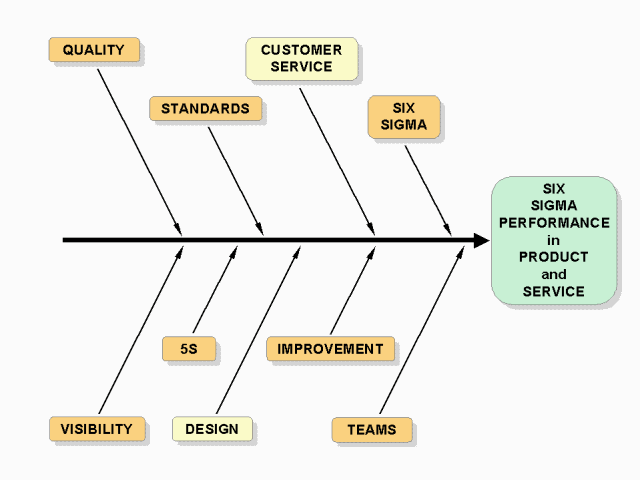
Quality and Six Sigma Linkages
Lean has a long history, although not called "Lean" until 1990. Henry Ford was a Lean pioneer at Highland Park. Deming taught the Japanese about waste. Boeing made bombers using Lean during World War II. Taiichi Ohno and Toyota refined Lean over 30 years. Today, many of the most exciting Lean companies (Dell, Nypro, Volvo, HP, TRW, etc.,) are once again to be found in the West. Yet some are still to start. The time is now short.
Lean has been slow to expand out of manufacturing. But the signs are now strong in construction, in health, even in law firms. The future is bright. Hence "operations", not "manufacturing".

Six Sigma and Lean have in common reduction of variation and improvement in performance. In operations, variation is the supreme killer.
Six Sigma began in Motorola in 1987 as an alternative to less successful TQM. The roots, in variation, go back to Deming. In 1995 Jack Welsh, who supported it at GE, gave the concept a big boost. Today, there is vast experience in both service and manufacturing. Six Sigma is pragmatic, with strong links to the bottom line. It is based around process and variation, uses well-established statistical concepts, has a clear methodology, and a recognised practitioner route (through "black-belt" training).
Six Sigma is not just about product quality. It is about quality in its widest sense - quality of process (both core and support), of service, and of product. Ultimately, it is about winning and retaining customers.
Quality and Lean are close partners, mutually reinforcing one another. Their future together seems assured.

"Supply Chains compete, not companies." Today the great opportunities for reducing lead-time, cutting waste, cutting inventory, and improving flexibility through the supply chain are becoming well recognised. Improving the supply chain means, in the first instance, extending the principles of Lean and six sigma to all participants in the chain. A chain is only as good as its weakest link. But with that foundation, there are further massive opportunities by calling in the particular strengths of partners, by sharing information about customers, and providing agility at the most appropriate parts of the chain. The internet, B2B and B2C, is the great facilitator.
The world class trilogy is the way forward.